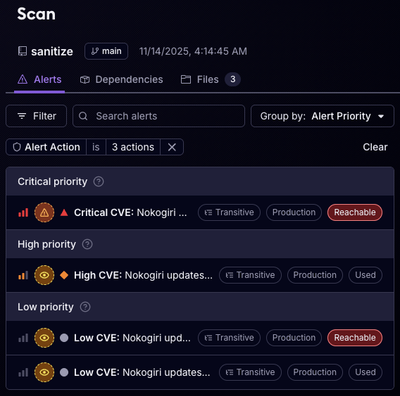
Product
Announcing Bun and vlt Support in Socket
Bringing supply chain security to the next generation of JavaScript package managers
com.ashampoo:kim-macosx64
Advanced tools
Kim is a Kotlin Multiplatform library for reading and writing image metadata.
It's part of Ashampoo Photo Organizer.
eXIf chunk & XMP
tEXt/zTXt chunkKim.update() API to perform updates to the relevant places
The future development of features on our part is driven entirely by the needs of Ashampoo Photo Organizer, which, in turn, is driven by user community feedback.
implementation("com.ashampoo:kim:0.26.2")
For the targets wasmJs & js you also need to specify this:
implementation(npm("pako", "2.1.0"))
Kim.readMetadata() takes kotlin.ByteArray on all platforms and depending on
the platform also kotlinx.io.files.Path, Ktor Source & ByteReadChannel,
java.io.File, java.io.InputStream, NSData and String paths.
val bytes: ByteArray = loadBytes()
val metadata = Kim.readMetadata(bytes)
/* ImageMetadata has a proper toString() similar to the output of ExifTool */
println(metadata)
val orientation = metadata.findShortValue(TiffTag.TIFF_TAG_ORIENTATION)
println("Orientation: $orientation")
val takenDate = metadata.findStringValue(ExifTag.EXIF_TAG_DATE_TIME_ORIGINAL)
println("Taken date: $takenDate")
This creates an instance of PhotoMetadata. It contains the following:
XMP:pick flagval bytes: ByteArray = loadBytes()
val photoMetadata = Kim.readMetadata(bytes).convertToPhotoMetadata()
val inputFile = File("myphoto.jpg")
val outputFile = File("myphoto_changed.jpg")
val metadata = Kim.readMetadata(inputFile)
val outputSet: TiffOutputSet = metadata.exif?.createOutputSet() ?: TiffOutputSet()
val rootDirectory = outputSet.getOrCreateRootDirectory()
rootDirectory.removeField(TiffTag.TIFF_TAG_ORIENTATION)
rootDirectory.add(TiffTag.TIFF_TAG_ORIENTATION, 8)
OutputStreamByteWriter(outputFile.outputStream()).use { outputStreamByteWriter ->
JpegRewriter.updateExifMetadataLossless(
byteReader = JvmInputStreamByteReader(inputFile.inputStream(), inputFile.length()),
byteWriter = outputStreamByteWriter,
outputSet = outputSet
)
}
See the example project for more details.
val bytes: ByteArray = loadBytes()
val newBytes = Kim.update(
bytes = bytes,
update = MetadataUpdate.Orientation(TiffOrientation.ROTATE_RIGHT)
)
See AbstractUpdaterTest for more samples.
val bytes: ByteArray = loadBytes()
val thumbnailBytes: ByteArray = loadThumbnailBytes()
val newBytes = Kim.updateThumbnail(
bytes = bytes,
thumbnailBytes = thumbnailBytes
)
See the Java example project how to use Kim in Java projects.
In the processing of HEIC and AVIF files, we handle them as standard ISOBMFF-based files, adhering rigorously to the EIC/ISO 14496-12 specification. To preempt potential legal issues, we intentionally omit certain boxes outlined in the HEIC specification, notably the image size ("ispe") and image rotation ("irot") boxes. This approach extends to AVIF images, as they repurpose the same boxes.
Contributions to Ashampoo Kim are welcome! If you encounter any issues, have suggestions for improvements, or would like to contribute new features, please feel free to submit a pull request.
This code is under the Apache License 2.0.
See the NOTICE.txt file for required notices and attributions.
FAQs
Kotlin Multiplatform library for image metadata manipulation
We found that com.ashampoo:kim-macosx64 demonstrated a not healthy version release cadence and project activity because the last version was released a year ago. It has 0 open source maintainers collaborating on the project.
Did you know?

Socket for GitHub automatically highlights issues in each pull request and monitors the health of all your open source dependencies. Discover the contents of your packages and block harmful activity before you install or update your dependencies.

Product
Bringing supply chain security to the next generation of JavaScript package managers

Product
A safer, faster way to eliminate vulnerabilities without updating dependencies

Product
Reachability analysis for Ruby is now in beta, helping teams identify which vulnerabilities are truly exploitable in their applications.